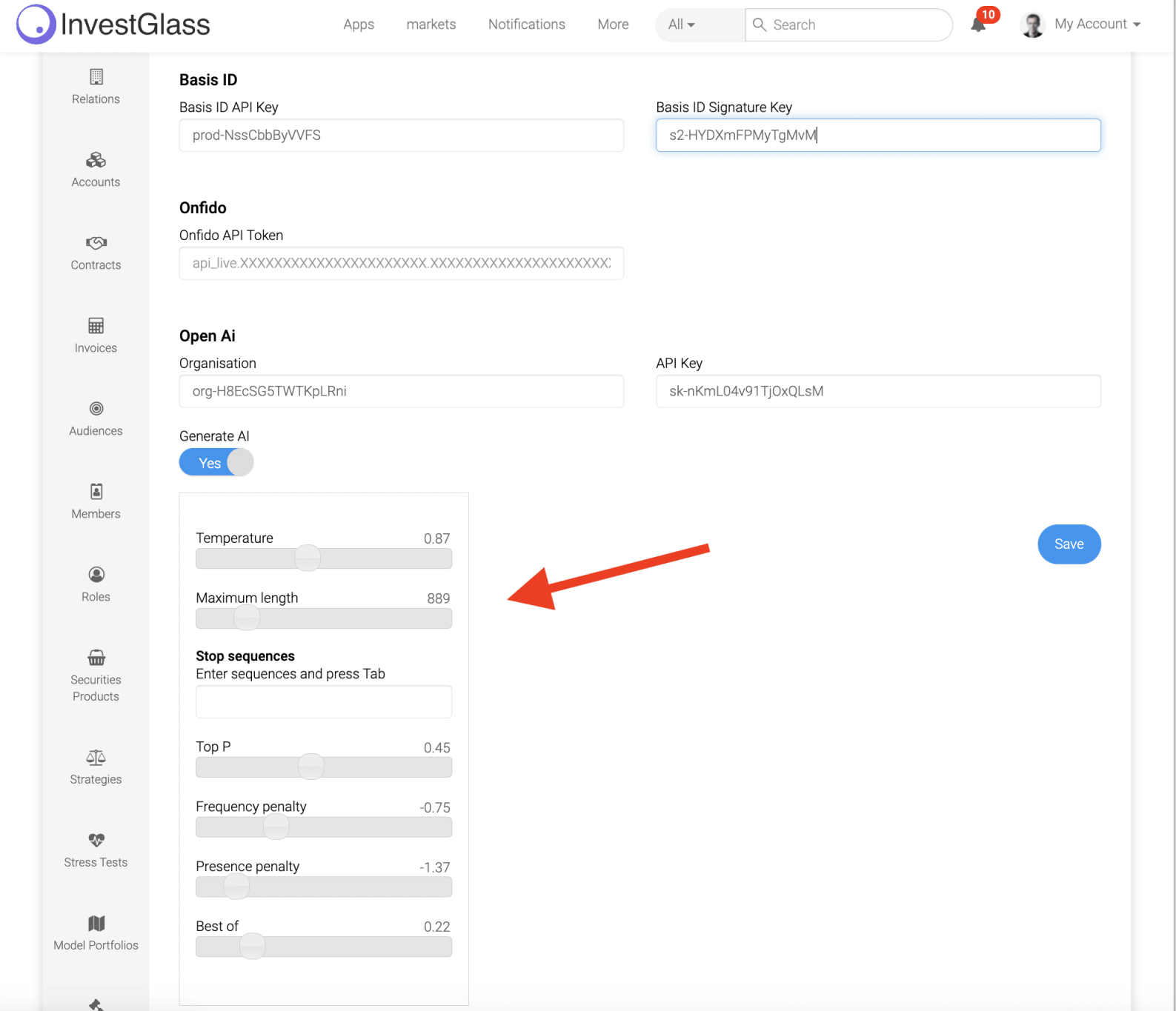Introducing ChatGPT New Parameter Elements

InvestGlass is enhancing its AI-driven CRM with new ChatGPT parameter controls, enabling more precise and user-specific responses. With the generative AI market in financial services projected to grow from $1.09B in 2023 to over $12B by 2033 (CAGR 28.1%) (Statista), optimizing AI interactions is key. These new settings—Temperature, Top P, Frequency Penalty, and Best Of—boost efficiency and accuracy in financial automation
1. Temperature
The temperature parameter governs the randomness of the AI’s responses. The lower the temperature, the more deterministic and focused the AI’s responses become. On the other hand, a higher temperature value leads to more diverse and creative outputs. By setting the temperature at 0.87, InvestGlass ensures that the AI produces relatively creative outputs while maintaining a certain level of coherence and relevance to the conversation at hand.
2. Maximum Length
It restricts the maximum token length of the generated text. Tokens typically represent a word or a character, based on the language and the model’s specifics. A higher maximum length allows for longer, more detailed responses, while a lower value makes the responses concise. Setting it to 889 provides a balance between detailed, informative content and maintaining an optimal response length.
3. Stop Sequences
The stop sequences parameter determines the sequences upon which the model should stop generating additional text. By inputting “Enter sequences and press Tab,” InvestGlass has informed the model to conclude its response as soon as it generates this sequence. This powerful feature allows for finer control over the response length and structure.
4. Top P
Also known as “nucleus sampling”, the Top P parameter, set at 0.45, represents the cumulative probability with which candidate tokens are considered for a particular output. The AI model ranks tokens based on the probability and selects a subset (nucleus) from which a random token is picked. The selected token is used to generate the next part of the text. A Top P value of 0.45 ensures a broad yet relevant pool of tokens for generating responses.
5. Frequency Penalty
The frequency penalty, set to -0.75, discourages the model from frequently repeating the same phrase or idea. Negative values guide the model to repeat tokens, while positive values deter repetition. The value of -0.75 ensures that the AI can comfortably reiterate key points when necessary, aiding in clarity and understanding.
6. Presence Penalty
This parameter, with a value of -1.37, adjusts the model’s inclination to introduce new, previously unmentioned concepts. A negative presence penalty promotes the introduction of novel concepts, while a positive value discourages it. The selection of -1.37 suggests InvestGlass’s preference for the AI model to bring in fresh, innovative ideas to the conversation, thereby enriching the dialogue.
7. Best of
The Best of parameter, set at 0.22, determines the number of independent messages the model generates from which the final output is chosen. This is particularly useful for fine-tuning the quality of the model’s response. The chosen value of 0.22 indicates that InvestGlass prioritizes quality over quantity in the AI’s responses.
In conclusion, these new parameter introductions by InvestGlass to ChatGPT significantly increase the customization options available to users. By tweaking these parameters, users can tailor the AI’s responses to better align with their specific needs, thereby significantly enhancing the user experience. This development underscores InvestGlass’s commitment to continual innovation in its AI-driven offerings, maintaining its status as a leader in the integrated financial solutions space.